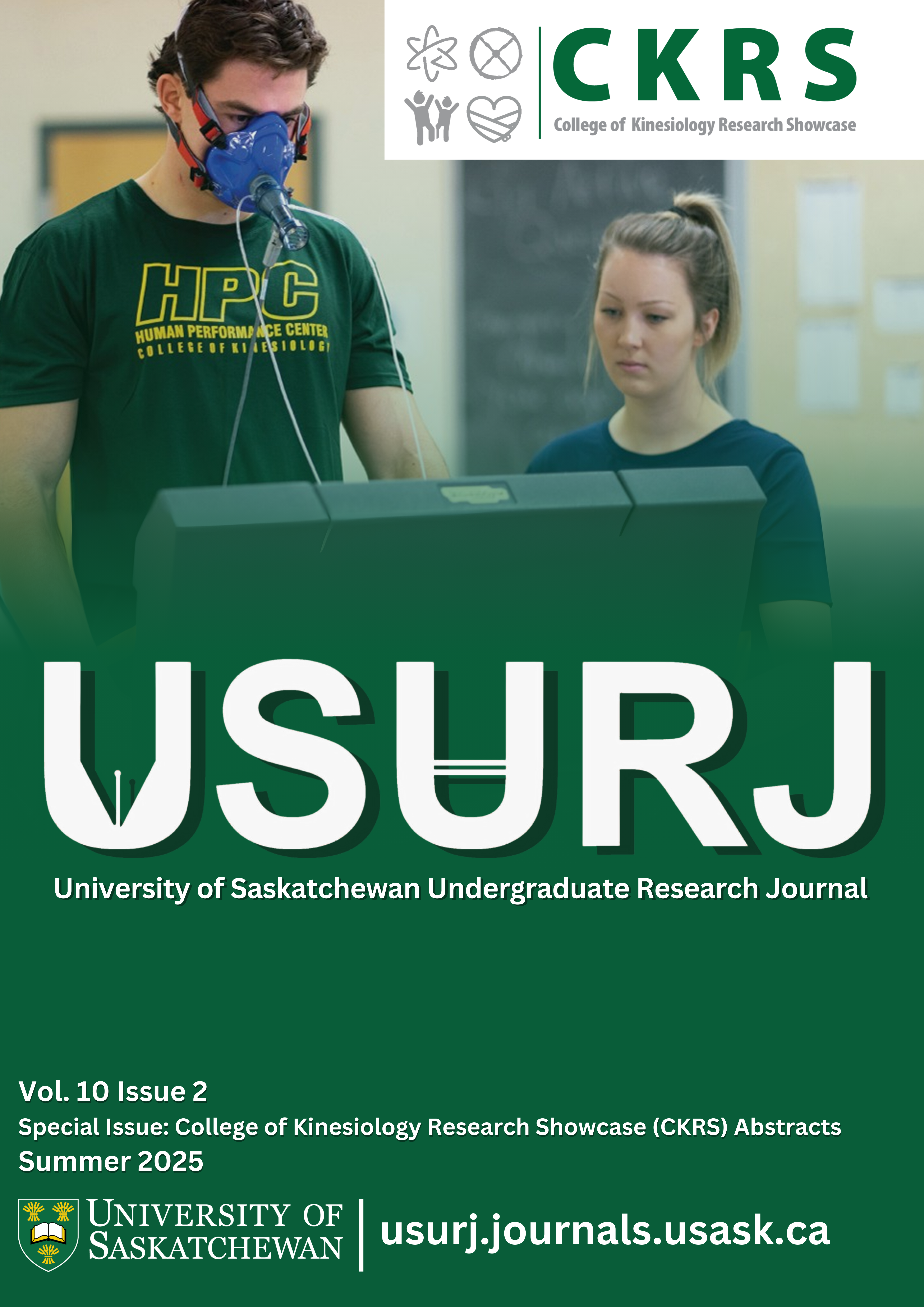Bone Health in Newcomer Children Compared to Canadian-Born Children
Main Article Content
Abstract
College of Kinesiology Research Theme: Child and Youth Health and Development
Introduction: Bone health is crucial during childhood, as this period is essential for achieving optimal peak bone mass, which can reduce the risk of osteoporosis and fractures later in life. While research exists on the determinants of bone health, suggesting newcomer children may be at risk of impaired skeletal development, little is known of the bone health of newcomer children. The purpose of this study was to evaluate if there were differences in bone health between newcomer and Canadian-born children.
Methods: Our cross-sectional study recruited forty-five children (12 newcomers, 33 Canadian-born) from 5 to 11 years of age. Bone health was assessed using high-resolution peripheral quantitative computed tomography (HR-pQCT) to measure total bone area (Tt.Ar), cortical area (Ct.Ar), trabecular area (Tb.Ar), total volumetric bone mineral density (Tt.vBMD), cortical density (Ct.vBMD), cortical thickness (Ct.Th), trabecular density (Tb.vBMD), trabecular thickness (Tb.Th), trabecular bone volume fraction (Tb.BV/TV), trabecular number (Tb.N), and trabecular separation (Tb.Sp) at the distal radius and tibia. Anthropometric measures were recorded, and physical activity (PA) was evaluated using the Childhood Physical Activity Questionnaire. Multivariate analysis of covariance (MANCOVA) was used to assess differences in HR-pQCT bone outcomes between groups while controlling for age, sex, height, weight, and PA. Statistical significance was set at p < 0.05.
Results: Newcomer children had significantly greater Ct.Ar (p = 0.02), Ct.vBMD (p = 0.02), and Ct.Th (p = 0.01) at the distal tibia compared to their Canadian-born peers. No significant differences were observed at the radius between groups (p > 0.05).
Conclusion: Contrary to previous literature, this pilot study did not find that newcomer children had impaired bone health. Instead, newcomer children demonstrated greater values for cortical bone at the distal tibia. This may be explained by our potentially healthier newcomer sample, which reported higher vitamin D intake, more educated parents, and possibly favourable premigration factors. Future research should explore the impact of refugee status, acculturation, healthcare access, PA, and diet with a larger and more ethnically diverse sample to better understand bone development of newcomer children.
Downloads
Article Details
Section
Articles: USURJ’s current Publication Agreements apply a Creative Commons Attribution-NonCommercial License (CC-BY-NC) by default. The CC BY-NC license lets others remix, tweak, and build upon work non-commercially. The author(s) can choose a different CC license, as outlined in https://creativecommons.org/about/cclicenses/. Please see the PDF for each article to determine what license is applied to that article. Author(s) can also request to reserve all copyright (All Rights Reserved). If there is no indication for articles published before September 2020, assume the author retains all rights beyond those necessary for publication by USURJ. All articles published after September 2020 will apply one of the aforementioned CC licenses. See the Publication Agreement under the Submission Preparation Checklist or Author Guidelines for more information. Artwork: All copyright for the original artwork remains with the artist unless they wish to apply a Creative Commons (CC) license to the artwork. Please see the PDF for each artwork to determine what license is applied to that artwork.
